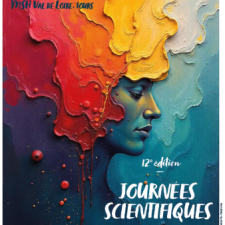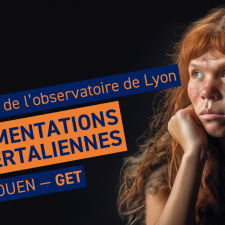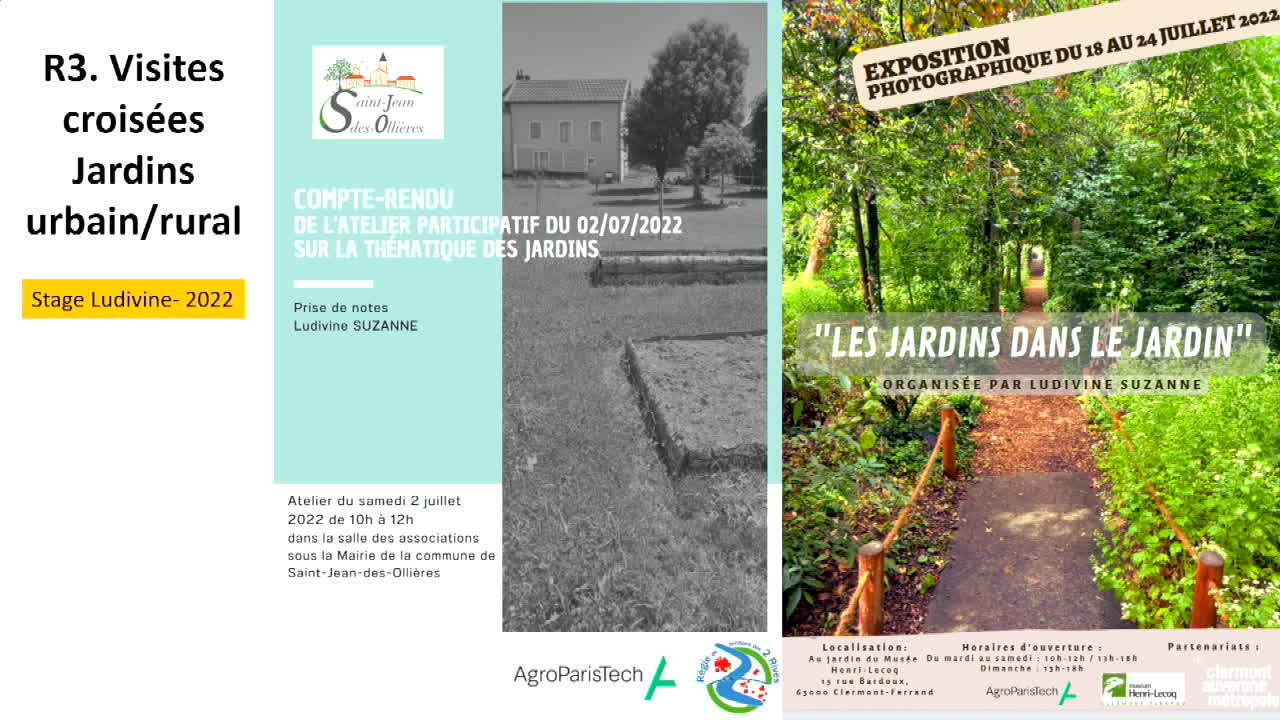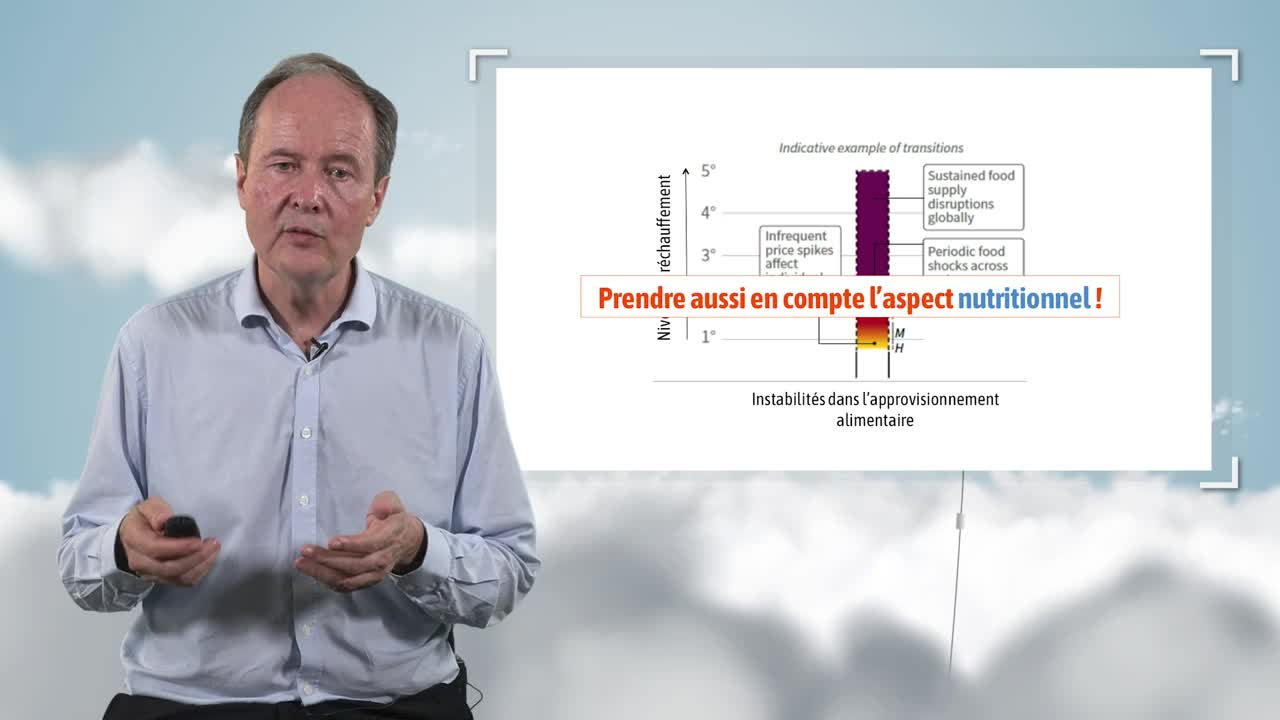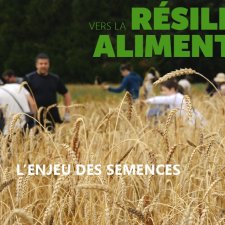Notice
Aspects symboliques de l’alimentation en Mésopotamie
- document 1 document 2 document 3
- niveau 1 niveau 2 niveau 3
Descriptif
Le thème de la séance sera l’occasion d’examiner les questions suivantes:
- Homme/ animal; assyrien – barbare; nomade – sédentaire; guerrier – non combattant: l’alimentation comme marqueur d’identité.
- Nourrir symboliquement: le cas des offrandes alimentaires aux dieux.
- A propos des interdits alimentaires.
- Mangeret boire: entre médecine et sorcellerie
Thème
Documentation
Documents pédagogiques
Les éditions de textes
– L’épopée de Gilgamesh
GEORGE A. R. 2003, The Babylonian Gilgamesh Epic, Oxford.TOURNAY R. J. et SHAFFER A. 1998, L’épopée de Gilgamesh, LAPO 15, Paris.
– Les hommes herbivores
BOTTÉRO J. et KRAMER N. K. 1989, Lorsque les dieux faisaient l’homme, Paris, 515-517.
– Le mariage du dieu Martu
KLEIN J. 1997, The God Martu in sumerian literature, IN Finkel and Geller (éds) Sumerian God and their Representations, CM 7, 99-116.
– La géographie de Sargon
LIVERANI L. 2003, The Sargon Geography and the Late Assyrian Mensuration of the Earth, State Archives of Assyria Bulletin, 13, 57-85.
– L’épopée d’Erra
BOTTÉRO J. et KRAMER N. K. 1989, Lorsque les dieux faisaient l’homme, Paris, p. 684 sq.CAGNI L. 1969, L’epopea di Erra, Studi Semitici 34, Roma.
– L’épopée de Zimri-Lim
MARELLO P. 1992, Vie nomade, IN J.-M. Durand (éd.), Recueil d’études en l’honneur de M. FleuryFlorilegium Marianum, Paris, 115-125.
–Le rituel de l’«Ouverture de la bouche»
WALKER C. et DICK M. 2001, The Induction of the Cult Image in Ancient Mesopotamia: The Mesopotamian Mis Pî Ritual , SAALT 1, Helsinki.
– Enki et Ninmah
BOTTÉRO J. et KRAMER N. K. 1989, Lorsque les dieux faisaient l’homme, Paris, p. 189 sq.
–Atra-hasis
BOTTÉRO J. et KRAMER N. K. 1989, Lorsque les dieux faisaient l’homme, Paris, p. 541 sq.LAMBERT W. ET MILLARD A. R. 1969, Atra-hasīs, The Babylonian Story of the Flood, Oxford.
– La description des offrandes alimentaires faites aux dieux
THUREAU-DANGIN F. 1921,
- Rituels accadiens, Paris, p. 26 sq et p. 95 sq.
DALLEY S. 2009, Babylonian Tablets from the First Sealand Dynasty,CUSAS 9, Bethesda.
– Le rituel d’intronisation de la prêtresse du dieu Ba’al
ARNAUD D. 1986,Recherches au Pays d'Aštata. Emar VI.3. Textes sumériens et accadiens. Texte, Paris, texte n°369.
– La répartition des parts sacrificielles dans le temple de l’Eanna
MCEWAN G. J. P. 1983, Distribution of Meat in Eanna, Iraq 45, p. 187-198
– Les historiettes d’Aššur
LAMBERT W. G.1960,Babylonian Wisdom Literature, Oxford, p. 215.
– Les textes hémérologiques
HULIN P. 1959, A Hemerological Text from Nimrud, Iraq21, p. 42-53.
LABATR. 1939, Hémérologies et ménologies d'Assur, Paris.
– Les textes médicaux et magiques
CAVIGNAUX A., F. N. H. et AL-RAWI F. N. H. 1995,Textes Magiques de Tell-Haddad, ZA 85, 1995, p. 29-46.
LAMBERT W. G.1960,Babylonian Wisdom Literature, Oxford, p. 240
PARPOLA S. 1970, Letters from Assyrians Scholars to the Kings Esarhaddon and Assurbanipal, Part I , AOAT 5/1, Neurkirchen-Vluyn (ABL 5 r. 16 = LAS I n° 143).
SCURLOCK J. et ANDERSEN B. R. 2005, Diagnoses in Assyrian and BabylonianMedecine, Illinois.
Pour les termes akkadiens: consulter le Chicago Assyrian Dictionary (CAD), disponible à la MOM et en ligne sur le site de l’Oriental Institute of the University of Chicago
Eléments bibliographiques
ABRAHAMI P. 2005, Pratiques et rites funéraires en Mésopotamie d’après les sources textuelles, KTEMA 30, 87-98.
BECKMAN G. 2008, La religion d’Emar, in G. Del Olmo Lete (éd.), Mythologie et Religion des Sémites Occidentaux, Vol. 2, OLA 162, 3-22.
CAVIGNEAUX A. et AL-RAWI F. 1993, New Sumerian Literary Texts from Tell Haddad, Iraq 55, 95-104.COHEN M. 1993, The cultic calendars of the ancient Near East, Bethesda.
FLEMING D.E. 1992, The Installation of Baal's High Priestess at Emar, Harvard.
GELLER M. J., Diet and Regimen in the Babylonian Talmud, in L. Milano et C. Grottanelli, (éds.), Food and Identity in the Ancient World, HANES 9, Padua.
JOANNÈS F. 2000, Le découpage de la viande en Mésopotamie, Topoi, Suppl.2, 333-345.
LABAT R.,« Hemerologien», Reallexicon der Assyriologie 4 (1972-1975), 317-323.
LAMBERT W. 1993, Donations of Food and Drink to the Gods, in J. Quaegebeur (éd.), Ritual and Sacrifice in the Ancient Near East, OLA 55, 191-200
LION B. 2003,Ages d’or et paradis perdus dans la littérature sumériennes, in V. Pirenne-Delforge (éd.), Représentations du temps dans les religions, Actes du colloque organisé par le Centre d’Histoire des Religions de l’Université de Liège, Bibliothèque de la Faculté de Philosophie et Lettres de l’Université de Liège – Fascicule CCLXXXXVI, Genève, 55-74.
PARPOLA S. 2002, The Leftovers of God and King. On the Distribution of Meat at the Assyrian and Achaemenid Imperial courts, in L. Milano and C. Grottanelli, (éds), Food and Identity in the Ancient World, HANES 9, Padua, 281-312.
PONGRATZ-LEISTEN P. 2000,The Other and the Ennemy in the Mesopotamian Conception of the World, in R. W. Whiting (éd.), Mythology and Mythologies. Methodological Approaches to Intercultural Influences, Melammu Symposia 2, Helsinki, 195-231
STOL M. 2006,The digestion of food according to Babylonian Sources, in L. Battini et P. Villard (éds), Médecine et médecins au Proche-Orient ancien, Oxford, 103-119
VAN DER TOORN K. 1989, La pureté rituelle au Proche-Orient, Revue de l’histoire des religions 206/4, p. 339-356 (disponible sur le portail Persée).
SCHWEMER D. 2007, Abwehrzauber und Behexung, Wiesbaden.
VILLARD P. 2006,Le porc dans les sources néo-assyriennes, in B. Lion et C. Michel (éds), De la domestication au tabou. Le cas des suidés au Proche-Orient ancien, Paris, 205-213.
Dans la même collection
-
Préparer, cuire, consommer la nourriture. De la fouille à l’interprétation. À partir d’exemples…
Castel-NogretteCorinneAlbukaaiDiaa EddinStordeurDanielle«Boire et manger il y a 10000 ans». La question est posée à propos d’un site: Jerf el Ahmar (moyen Euphrate) où se détectent les premières cultures de céréales. Le traitement, le stockage et la
-
Le sel dans les sociétés anciennes de l'Orient et du Caucase : exploitations et usages, d'après …
MarroCatherineLe sel n’est pas une denrée alimentaire en soi: c’est un condiment (exhausteur de goût) et un conservateur (salaisons, saumures). Le sel tient donc une place à part dans l’alimentation humaine. L
-
Les banquets en Mésopotamie : textes et images
LionBrigitteSur la pratique des banquets, la Mésopotamie a fourni, pour les époques historiques, des corpus de textes et d'images relativement abondants. Or les deux types de sources sont (comme toujours) très
-
Le vin dans le Proche-Orient ancien
LombardPierreOn s’accorde pour considérer que le vin, issu de la transformation naturelle, mais aussi guidée par l’homme, du jus de raisin, est l’une des boissons les plus anciennes de l’humanité, qui en a sans
Sur le même thème
-
"Resource curse" or "tough neighborhood"? Untangling law and order problems at the Porgera gold min…
Increasingly, scholars use the term ‘resource curse’ not in a narrow technical sense, but to refer to all social pathology that occurs near resource developments. But how adequate can monocausal
-
Du pot aux recettes : expérimentation de préparations gauloises, romaines, médiévales et modernes,…
Roure-HorardMarie-PierreNous disposons, sur de nombreux sites archéologiques, de céramiques à usage culinaire gauloises, romaines, médiévales et modernes dont les argiles ont enregistré, par imprégnation, les marqueurs
-
Voix aux chapitres #6 : Autour de l'ouvrage "La Chine par le menu"
HuretRomainKiesowRainer MariaSabbanFrançoiseFournierTristanTrémonAnne-ChristineStanzianiAlessandroThéryAëlLa sixième séance de Voix aux chapitres est consacrée à l'ouvrage La Chine par le menu. Cuisine culture culinaire et traditions alimentaires chinoises de Françoise Sabban, 12 décembre 2024 à l'EHESS.
-
Véganes ou cannibales : le casse-tête des alimentations néandertaliennes
JaouenKlerviaDepuis quelques années, les analyses isotopiques nouvellement mises au point ont permis d'explorer en profondeur l'alimentation néandertalienne, révélant des informations précieuses sur leur régime
-
HORTUS - Revaloriser les jardins potagers pour une résilience des territoires
LardonSylvieSylvie Lardon (UMR Territoires) présente le projet HORTUS qui vise à revaloriser les jardins potagers sur le territoire du projet alimentaire territorial (PAT) du Grand Clermont et du PNR Livradois
-
Climate change, agriculture, and food security
SoussanaJean-FrançoisJean-François Soussana, a research director at the INRAE, discusses the relationship between climate change and food security in this video.
-
Vers la résilience alimentaire || Chapitre 7: Recyclage des nutriments
EsculierFabienRaguetLouiseDiazabakanaAmbrePréelMathieuRoesMichaëlSeptième et dernier épisode de la série documentaire : "Vers la résilience alimentaire", d'après le guide rédigé par Les Greniers d'Abondance. Cet épisode expose une des voies de résilience
-
Vers la résilience alimentaire || Chapitre 6 : Simplifier et raccourcir la logistique et l'achat
BritAnne-CécileBrosseauFlorianAntonIsabelleMacéGérardTedescoJean-FrançoisTêtedoieChristianSixième épisode de la série documentaire : "Vers la résilience alimentaire", d'après le guide rédigé par Les Greniers d'Abondance. Cet épisode expose une des voies de résilience proposées par LGA :
-
Vers la résilience alimentaire || Chapitre 5 : Développer des outils de stockage et de transformati…
LattrePhilippine deBégardsPhilippeBonusEmmanuelleClaverieAlainCinquième épisode de la série documentaire : "Vers la résilience alimentaire", d'après le guide rédigé par Les Greniers d'Abondance. Cet épisode expose une des voies de résilience proposées par LGA
-
Vers la résilience alimentaire || Chapitre 4 : Évoluer vers une agriculture nourricière
GrimonpontArthurFrézelBenjaminChapuisGautierQuatrième épisode de la série documentaire : "Vers la résilience alimentaire", d'après le guide rédigé par Les Greniers d'Abondance. Cet épisode expose deux des voies de résilience proposées par
-
Vers la résilience alimentaire || Chapitre 2 : L'enjeu des semences
DusacreChloéBridonneauSimonDeuxième épisode de la série documentaire : "Vers la résilience alimentaire", d'après le guide rédigé par Les Greniers d'Abondance. Cet épisode expose une des voies de résilience proposées par LGA
-
Changement climatique, agriculture et sécurité alimentaire
SoussanaJean-FrançoisJean-François Soussana, directeur de recherche à l’INRAE, discute dans cette vidéo des relations entre le changement climatique et la sécurité alimentaire.







